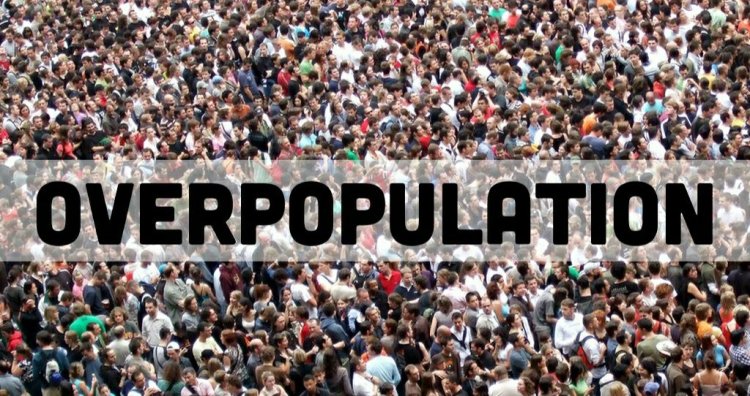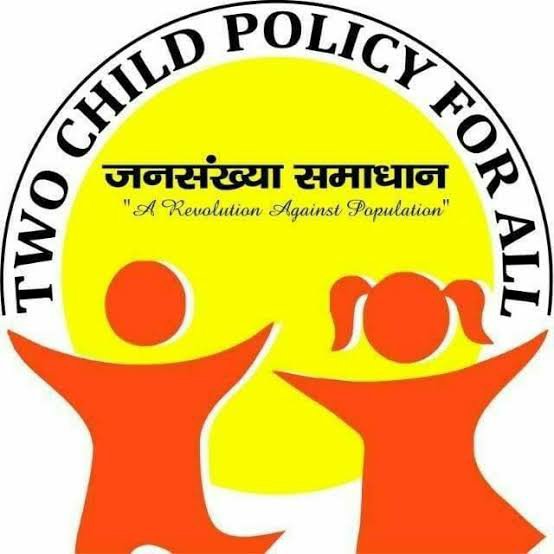India currently has the second-largest population in the world and is projected to overtake top-ranking China within few upcoming years. Its residents comprise more than one-seventh of the entire world’s population. In comparison with other countries whose populations are decreasing, such as Japan, India has a relatively small share of aged population, which indicates the probability of lower death rates and higher retention of the existing population.

Every nook and corner of India is a clear display of increasing population. Whether you are in a metro station, airport, railway station, road, highway, bus stop, hospital, shopping mall, market, temple, or even in a social/ religious gathering, we see all these places are overcrowded at any time of the day. This is a clear indication of overpopulation in the country.
According to the Worldometers, The current population of India is 1,370,177,840 as of , October 10, 2019. It means India has crossed the 1-billion mark. This is the second most populous country of the world after China and the various studies have projected that India will be world’s number-1 populous country, surpassing China, by 2025. Inspite of the fact that the population policies, family planning and welfare programmes undertaken by the Govt. of India have led to a continuous decrease in the fertility rate, yet the actual stabilisation of population can take place only by 2050.

Overpopulation is a crisis that potentially stands alongside climate change and unemployment as one of the biggest challenges facing humanity today. Despite this, there is little in the way of education or dialog relating to the issue, particularly in schools. If this doesn’t change, the issues highlighted in this article may continue to grow unabated. If that happens, these issues could have a knock-on effect that will lead to untold problems in the future.

Possible Causes Of Over Population
- The two main common causes leading to over population in India are:
The birth rate is still higher than the death rate. We have been successful in declining the death rates but the same cannot be said for birth rates.
The fertility rate due to the population policies and other measures has been falling but even then it is much higher compared to other countries.
- Early Marriage and Universal Marriage System: Even though legally the marriageable age of a girl is 18 years, the concept of early marriage still prevails and getting married at an young age prolongs the child bearing age. Also, in India, marriage is a sacred obligation and a universal practice, where almost every woman is married at the reproductive age.
- Poverty and Illiteracy: Another factor for the rapid growth of population is poverty. Impoverished families have this notion that more the number of members in the family, more will be the numbers to earn income. Some feel that more children are needed to look after them in their old age. Also hunger can be cause of death of their children and hence the need for more children. Strange but true, Indian still lag behind the use of contraceptives and birth control methods. Many of them are not willing to discuss or are totally unaware about them. Illiteracy is thus another cause of over population.
- Age old cultural norm: Sons are the bread earners of the families in India. This age old thought puts considerable pressure on the parents to produce children till a male child is born. ‘More sons, the better the earnings’ is the basis for such mentality. It needs to be changed. Now, india is more focussed on woman empowerment.
- Illegal migration: Last but not the least, we cannot ignore the fact that illegal migration is continuously taking place from Bangladesh, Nepal leading to increased population density.

Possible Effect Of Over Population
Even after 73 years of independence, the scenario of our country is not good, due to over population. Some major impacts of high population are as follows:
Unemployment: Generating employment for a huge population in a country like India is very difficult. The number of illiterate persons increases every year. Unemployment rate is thus showing an increasing trend. India’s rate of unemployment doubled in the past two years, according to the State of India’s Environment (SoE) In Figures, 2019. This has particularly affected young graduates. According to the report of Centre for monitoring indian economy (CMIE), the unemployment rate has gone up from four per cent to 7.6 in the last two years (May 2017-April 2019). The unemployment rate in April 2019 was the highest in two years. The rate for rural areas in this month was also the highest in this period.

Manpower utilisation: The number of jobless people is on the rise in India due to economic depression and slow business development and expansion activities.
Pressure on infrastructure: Development of infrastructural facilities is unfortunately not keeping pace with the growth of population. The result is lack of transportation, communication, housing, education, healthcare etc. There has been an increase in the number of slums, overcrowded houses, traffic congestion etc.
Resource utilisation: Land areas, water resources, forests are over exploited. There is also scarcity of resources.
Decreased production and increased costs: Food production and distribution have not been able to catch up with the increasing population and hence the costs of production have increased. Inflation is the major consequence of over population.
Inequitable income distribution: In the face of an increasing population, there is an unequal distribution of income and inequalities within the country widen.
Steps to Control Population in India
The Government of India, politicians, policy makers should initiate a bold population policy so that the economic growth of the country can keep pace with the demands of a growing population. Major steps which have been already implemented but still need to be emphasised more to control population.
Increasing the welfare and status of women and girls, spread of education, increasing awareness for the use of contraceptives and family planning methods, sex education, encouraging male sterilisation and spacing births, free distribution of contraceptives and condoms among the poor, encouraging female empowerment, more health care centres for the poor , to name a few, can play a major role in controlling population.

India’s strengths in the global world in various fields cannot be ignored, whether in science & technology, medicine and health care, business and industry, military, communication, entertainment, literature and many more. Experts are hopeful that by increasing public awareness and enlisting strict population control norms by the Government will definitely lead the way for the country’s economic prosperity and control of population.
POPULATION CONTROL BILL
During the Monsoon session, a few Members of Parliament tabled a draft before President Ram Nath Kovind, demanding a population control bill. If the bill gets passed in Indian Parliament, the two-child policy will be introduced in the country.
Two-child policy, famously known as ‘Ham do Hamare do’ is a term which has been frequently used in public via advertisements on trucks or on public walls. The term is not new to Indians, especially. A two-child policy is a government-imposed limit of two children allowed per family, with the perks of government subsidies given only to the first two children. It has previously been used in Vietnam
Since 2016, it has been implemented in China, replacing its previous one-child policy.
Families nowadays are getting smaller as they aren’t even able to feed a single child. However, there are still families in rural areas in India where a woman is treated as a machine for producing children. A machine which has to produce a number of girls till the time a boy is not born, resulting in no family planning whatsoever.
As per East Asia Forum Report, Demand for water and food is rising in India, the global demand for water in 2050 is projected to be more than 50 per cent of what it was in 2000. According to the same report, the demand for food will double in the year 2050 and even if India manages to feed its expanding population, its growth may not be ecologically sustainable.

THE FINAL WORDS : Perhaps if solutions like the two child policy or birth control and others remedies mentioned above were applied to India and the World the population growth would slow, giving us more control of our own destiny. However, as of now we have yet to see these changes or any change for that matter to slow a growing problem that is a large undisputed problem for all of mankind. Only with the effort of many people can we reduce the population growth and continue to live the lives we currently have. If we continue to have such a high population growth rate we will struggle to support the billions of people on this planet. This will cause famine and conflict and will limit the resources for future generations. We will destroy the earth rather than preserving it which is our duty since we inhabit the earth. So spread such solution to your nearby friends and surroundings!

If you wish to share your own opinions about overpopulation, please do continue the debate in the comments section below. Alternatively, share this article on social media to encourage a conversation in your own community.
Reference: Wikipedia, worldometers.info, EIFR and statisticstimes.com


The population is the biggest reason for all the other problems in India.
LikeLiked by 1 person
Yes, it’s a origin to all other problems! We together, with firm decision, may reduce the overpopulation. The only thing required is the ‘right understanding’ of the fact. Thanks for reading… @Manoj Mehra
LikeLike
Fabulous
LikeLiked by 1 person
Thank you for kind words. Keep visiting and sharing such useful contents…@rajanisingh885721172
LikeLike
Please read my post
LikeLiked by 1 person
Yeah… for sure!
LikeLike
Interesting and alarming
LikeLiked by 1 person